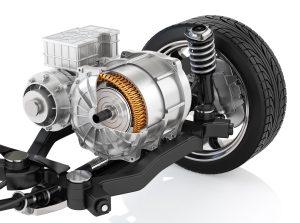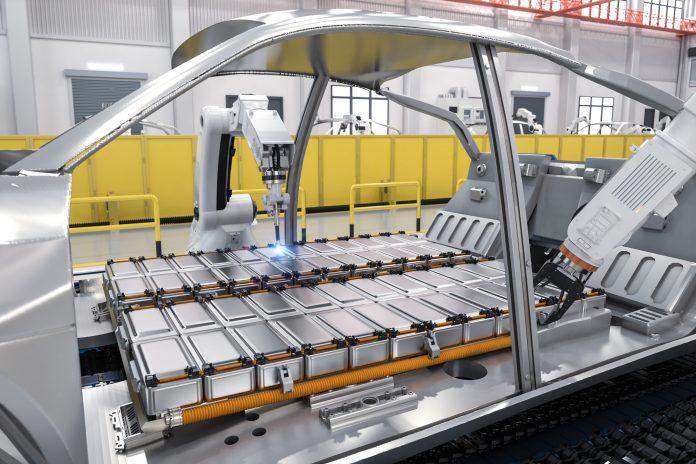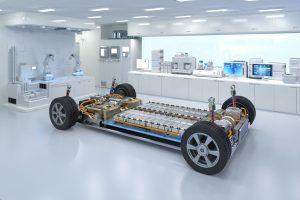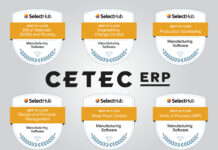According to an article on the World Economic Forum website in March 2023, referencing mostly data from the “Global EV Outlook 2023” which was published by the International Energy Agency, 1 in 7 cars sold globally now is electric. In 2022, electric vehicle (EV) car sales increased by 60%. Meanwhile global sales of conventional cars with internal combustion engines dropped in the past five years. The global sales increase surpassed 10 million units for the first time. The demand in 2022 can be contrasted with data from the IEA for 2017, in which one in every 70 cars sold was an EV. Norway led the way with EVs making up 79% of the new cars being sold in that country in 2022.
EVs are definitely gentle on the environment and are relatively comparable in cost compared to internal combustion vehicles (for similar functions and features of course). They are emissions-free and widely seen as the future of transport.
INTERNATIONAL PERSPECTIVE
Battery-powered EVs (BEVs) and plug-in hybrid electric vehicles (PHEVs) make up the primary subsegments of EVs. Outside of the US, these vehicles are enjoying phenomenal growth. And it is no wonder that it is occurring. Policy makers in several economies are putting regulations in place to force the issue. For instance, in 2021, the European Commission unveiled plans to stop the sale of vehicles using internal combustion engines by 2035 as part of a wider climate target to cut emissions by more than half over this decade. In the face of strong conservative opposition, the European Parliament on June 8, 2022 narrowly voted to back the European Commission proposal for a total ban on new CO2-emitting vehicles by 2035.
Around the same time the EU was banning internal combustion engines, the UK released a similar outcome. The phase out date for new gasoline and diesel vehicles would be brought forward to 2030. Further, from 2035, the UK mandates that all new cars and vans must be fully zero emissions at the tailpipe.
China, which is the world’s largest auto market, has targeted that 40% of vehicles sold in the country be electric by 2030.
US GOES ALL-IN
Electric car sales in the United States – the third largest automobile market in the world – increased by 55% in 2022, reaching a sales share of 8% according to the Global EV Outlook 2023 data. The Inflation Reduction Act is a piece of US policy with significant if not historic impact on electrification. The light-duty electric vehicle (EV) tax credit of up to $7,500 per vehicle has been extended through 2032, and the total per manufacturer cap of 200,000 has been removed (number of vehicles eligible for the tax credit). A vehicle must meet the MSRP cap, the income cap, and be final assembled in the United States. Further the percentages of critical minerals mined in the United States or its Free Trade Agreement partners increases to 80% minimum by 2032, while the minimum percentage of battery components manufactured or assembled in North America has stair stepped requirements up to 100% in 2032. For a vehicle to be eligible for the tax credit, all the requirements must be met. For the first time there is also a used EV tax credit. The vehicle must be at least 2 years old and have a price of $25,000 or less. The tax credit is $4,000 or 30% of the selling price whichever is lower. The legislation also includes tax credits for commercial EVs, EV charging equipment and deployment, and electrifying the USPS.
Along with the tax credit are $2 billion for a Domestic Manufacturing Conversion Grant Program. Domestic Manufacturing Conversion Grants for electrified vehicles will provide cost-shared grants supporting the domestic production of efficient hybrid, plug-in electric hybrid, plug-in electric drive, and hydrogen fuel cell electric vehicles. Add to that program another $3 billion for the Advanced Technology Vehicle Manufacturing Program, which provides loans to support the manufacture of eligible advanced technology vehicles and qualifying components. For US automakers these seem like promising developments.
Although charging infrastructure and driving range have improved over the years, they remain major concerns for US drivers given the typically long travel distances and lower popularity and limited availability of alternatives such as rail. Addressing these concerns in the near term will make or break mass adoption – and will require some changes to the automotive industry.
GAME CHANGERS
In one of our articles this month, we highlighted a press release from GM regarding a high end EV Cadillac model that will be built on-demand with very specific wants addressed for each commissioned model. Accounting for the highest technology content ever of one of their vehicles, there is a cost to commission this market of one customization and it is reflected in the price of one of these EVs. Core to the advanced capabilities are lighter parts driven from additive manufacturing (AM) and improved battery technology.
Improvements in battery technology go hand-in-hand with additive manufacturing because one of the biggest challenges facing EVs is their weight. EVs are typically much heavier than fossil-fuel powered vehicles, due to the large battery packs that they require. There are a number of reasons why this is the case. First, the battery packs that power EVs are made up of a number of heavy metals, such as lithium, cobalt, and nickel. Second, the battery packs themselves are very large and bulky. Third, EVs often have other components that are heavier than their fossil-fuel powered counterparts, such as the electric motors and the inverters.
The weight difference between EVs and fossil-fuel powered vehicles can have a number of implications. First, it can affect the range of EVs. The heavier an EV is generally the shorter its range will be. Second, the weight difference can affect the performance of EVs. Heavier EVs are less agile and less responsive than lighter EVs, although EVs in general do tend to have a lower center of gravity.
There are a number of things that can be done to reduce the weight of EVs. One is to use lighter materials in the construction of the battery packs. Another is to design more efficient battery packs that can store more energy in a smaller space. Finally, manufacturers can also look at ways to reduce the weight of other components, such as the electric motors and the inverters.
Lighter materials lends itself to leveraging additive manufacturing techniques. From an additive manufacturing perspective, General Motors and Ford Motor Company are both embracing additive manufacturing concepts. They are investing heavily in AM research and development, and they are starting to use AM to manufacture parts for their vehicles. GM is using AM to create a variety of parts for its EV lineup, including battery housing, motor housing, and brake calipers. Similarly, Ford is using AM to create parts for its EVs, adding front suspension components to its list, and also working with partners like HP to understand how to recycle AM generated material. Tesla is focusing on additive manufacturing concepts for motor housings and other elements of their vehicles..
 Offerings from companies like Divergent3D offer potential for huge impacts by combining additive manufacturing with AI. From their website (www.divergent3d.com), “Divergent has invented a complete manufacturing solution to address system level challenges. The Divergent Adaptive Production System (DAPS) is a complete software hardware solution designed to replace traditional vehicle manufacturing. To make the complex simple, it is a complete modular digital factory for complex structures. Given a set of digital requirements as input, the machine automatically computationally engineers, additively manufactures, and assembles any complex structure. The system is able to move seamlessly between manufacturing different vehicle models.”
Offerings from companies like Divergent3D offer potential for huge impacts by combining additive manufacturing with AI. From their website (www.divergent3d.com), “Divergent has invented a complete manufacturing solution to address system level challenges. The Divergent Adaptive Production System (DAPS) is a complete software hardware solution designed to replace traditional vehicle manufacturing. To make the complex simple, it is a complete modular digital factory for complex structures. Given a set of digital requirements as input, the machine automatically computationally engineers, additively manufactures, and assembles any complex structure. The system is able to move seamlessly between manufacturing different vehicle models.”
The Global EV Outlook 2023 sums up the US battery technology investments, from supply chain players and automakers, saying, “Between August 2022 and March 2023, major EV and battery makers announced cumulative post-IRA investments of USD 52 billion in North American EV supply chains, of which 50% is for battery manufacturing, and about 20% each for battery components and EV manufacturing. Overall, company announcements including tentative commitments for US investments for future battery and EV production add up to around USD 75-108 billion. As an example, Tesla plans to relocate its Berlin-based lithium-ion battery gigafactory to Texas, where it will work in partnership with China’s CATL, and to manufacture next-generation EVs in Mexico. Ford also announced a deal with CATLfor a battery plant in Michigan, and plans to increase electric car manufacturing sixfold by the end of 2023 relative to 2022, at 600 000 vehicles per year, scaling up to 2 million by 2026. BMW is seeking to expand EV manufacturing at its plant in South Carolina following the IRA. Volkswagen chose Canada for its first battery plant outside Europe, which will begin operations in 2027, and is also investing USD 2 billion in its plant in South Carolina. While these investments can be expected to lead to high growth in the years to come, the impact may only fully be seen from 2024 onwards as plants come online.”
Further, gigantic players in the product lifecycle and digital transformation space, such as Siemens with its TeamCenter and Siemens Xcelerator SaaS offerings, are offering solutions specifically tailored to rapid development of battery technology. The capability is available to virtually design next generation batteries from cells to battery packs, speeding iteration cycles and eventually new product introduction – doing so with sustainability and material savings.
DIGITAL TRANSFORMATION
Could EVs drive digital transformation? Certainly EV mandates in Europe and China will cause a ripple effect in North America. The investments in the US economy will enable effective change at home because the change will be necessary to keep up with the rest of the world, and continue to be connected to global supply chains. Battery designs will be digital, vehicle designs will be modeled using digital twins. We already see vehicles on the road with sensor-based services, but EVs will have operational digital twins, new business models will be introduced for service and support – all this is changing now. However, it isn’t perfect yet. My sister-in-law drives a 2021 BMW X5 Xdrive45e, which is a PHEV. A couple of months ago she got into the vehicle after leaving a local store. The vehicle would not start. Then she received a call to her cellular phone and the vehicle service center told her they saw a number of voltage issues. Plus. They ran a diagnostic and confirmed the errors and said we do not recommend jumping it off. Plus. Then it wouldn’t do anything and there was no other option. Not plus.
After the vehicle was towed, the technician at the repair shop said that the car manufacturer “has a method to lock the vehicle down to keep any additional potential damage from happening.” How could digital transformation have impacted this situation? Support services are not new, but they are more comprehensive in an EV, which generally contain more software and electronic content than gas-powered vehicles. In 2021, the Wall Street Journal reported on this very topic, stating that the status quo automakers would not catch Tesla by out-engineering them because what “they didn’t consider: Electric vehicles are more about software than hardware. And producing exquisitely engineered gas-powered cars doesn’t translate into coding savvy.” [Feb 16, 2021 Wall Street Journal: Electric Vehicles are More Software than Hardware]. The EV will eventually know the preferences of the owner and the diagnostic actions which are approved, so that a self-driving car could arrive and pick up my sister-in-law to take her home, and a tow truck could be sent – while she was shopping. Or maybe there is a compartment which would house a replacement battery good for a 20 mile radius, and the voltage flow is re-routed on demand so that she could get home. Or maybe the bad cell in the battery is somehow deactivated so that the car would start and make it home, where everyone would be more comfortable arranging pickup of the disabled vehicle. Or maybe there is an additively manufactured part which could be replaced that performs a circuit change and allows the vehicle to limp home. Regardless, battery, vehicle diagnostics, replacement parts, integration with supply chain, and integration with support services are more readily possible when the car is connected – and downstream response information can be distributed.
Our constant theme – our digital world is changing, and EVs are playing a significant role. Let’s go find the nearest Gigafactory.













































